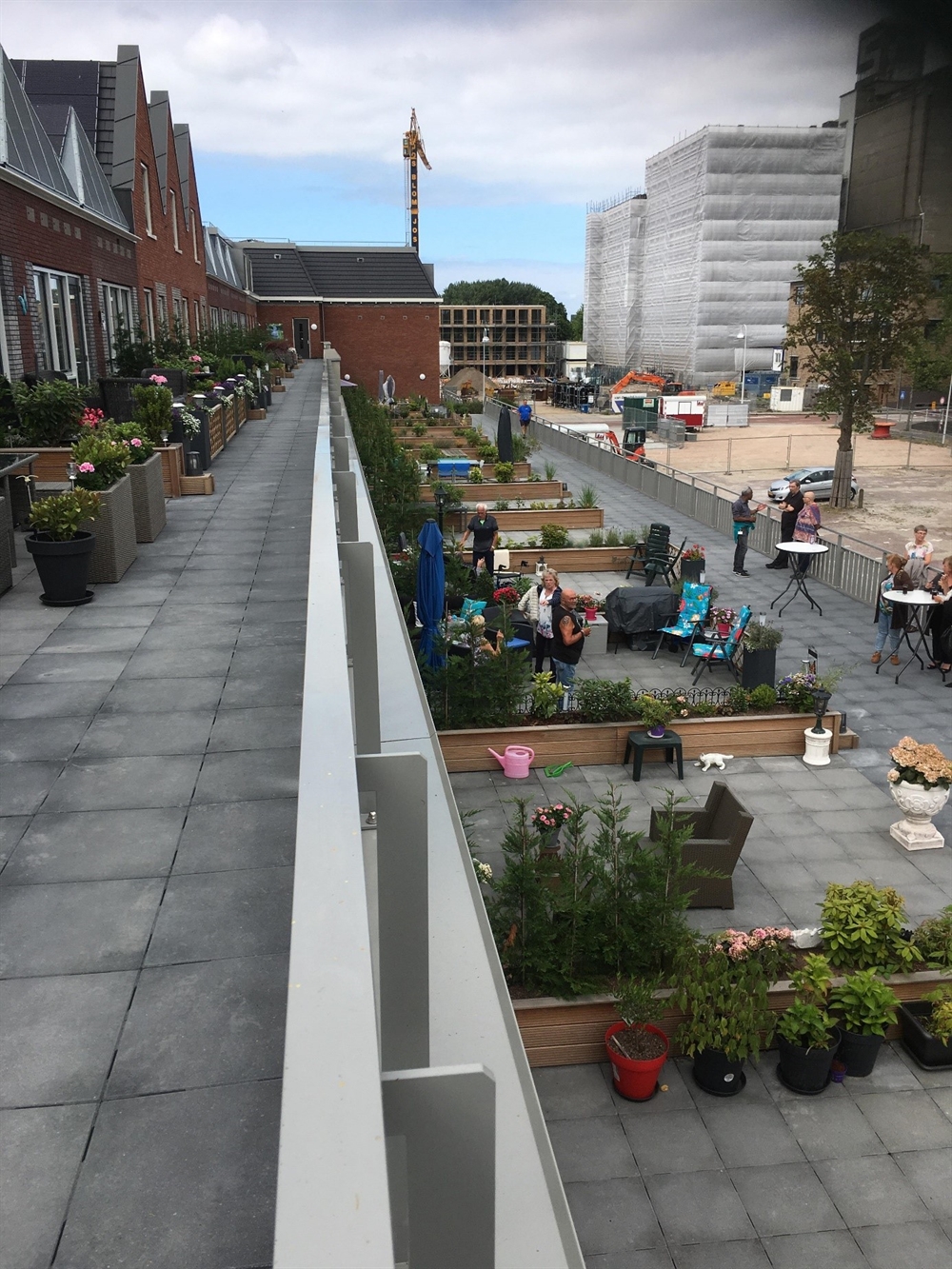Lakenplein square in Leiden being converted into Laken Park
The city of Leiden has completed the first council housing project featuring climate adaptation as a primary element in the construction tasking. The set-up of the Lakenplein Square Climate-Proof, Water-Conscious, and Attractive project has proven a success. The collective efforts of the Portaal housing corporation, the municipality of Leiden, the Rijnland district water control board, Dunea water company, the architect, the construction company and local residents (among whom representatives of the adjoining playground association) have managed to future-proof a restructuring project in Leiden city centre.
The result, a compact Zero on the Meter housing block, comprises indoor parking facilities and is surrounded by plenty of greenery. The outdoor spaces have been geared to the collection of torrential rain. Rainwater buffers in the soil reduce the impact of prolonged periods of drought. Lots of greenery, featuring large groups of trees, help to reduce urban warming. This makes the area an ideal and attractive place to live, now and in the future. Climate adaptation thus visibly enhances the living environment.
Results
Collaboration right from the pre-planning stage enabled the combination of aims and objectives of a wide range of stakeholders: much unlike regular processes, in which the parties successively assess one another’s proposals, and which virtually precludes the submission of individual wishes. The process was chaired by a non-stakeholder party, which cleared the way for unencumbered discussions. Unfortunately, attention to the topic of climate adaptation slackened when the final design of the houses was elaborated. As a result, not everything has been constructed in an optimum climate-proof and water-conscious manner. An optimum climate-proof approach entails that rainwater drainage to the sewer system is kept to a minimum, if at all; preferably, rainwater is infiltrated on site. Particularly indoors (use of tap water, utilisation of rainwater, et cetera), the design of the houses could have been better. However, much can be realised nonetheless: a lot of greenery and inspiration for the optimum planning of outdoor spaces. Rainwater can be retained, the outdoor spaces can be modelled such that torrential rain will not pose a problem, while at the same time creating room for increased biodiversity. Parking spaces have been constructed as small as possible and convex, using water permeable materials and featuring wadis to drain torrential rain. Trees have been planted to provide cooling, help evaporation, and enhance the environment. Proposals have been drawn up for green embankments along the Katoen Park, a water connection from the Binnenvestgracht to the Singel, and a water playground for older children. Local residents can be involved in efforts aimed at a conscious use of (rain) water, and in the planning and maintenance of their outdoor spaces, with attention to house front gardens and the design of their terraces. The document at hand serves as an inspiration for the elaboration of the Lakenplein Square in more concrete terms.

Image: Lakenplein Square at its opening in June 2018; the substantiation of the outdoor spaces still continues.
Many parties involved were new to the topic of climate adaptation. The project devoted ample time to the sharing of expertise and skills. The collaboration on a specific location proved refreshing, in particular on account of the diversity of the participants. This form of collaboration between a municipality and a housing corporation is new. Immediately involving all sections of the organisation is difficult yet essential. It calls for an administrative statement and administrative guidance. Everyone was given homework to do: what can be done within one’s own organisation and in collaboration with others in order to ensure that a climate-resilient approach will be a matter of course in the future? Many agreements were made to collectively explore opportunities for further collaboration. The optimum goal is a climate-adaptation agenda. This project constitutes a perfect basis for the further elaboration of several districts of the city.
Contact person
Anneke van Veen
Ambassadeur Water, Vereniging Gemeenten voor Duurzame Ontwikkeling
ae.van.veen@kpnmail.nl
Hiltrud Pötz
Atelier GROENBLAUW
hiltrudpotz@ateliergroenblauw.nl
